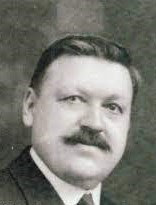The day the birth of Christ was celebrated rather than the birth of the Sun
 |
| A bust of Constantine in the Capitoline Museum in Rome |
Constantine had probably chosen the date carefully. Christians had been discussing the exact date of the birth of Jesus for some time and December 25 must have been the date most widely agreed. The emperor Constantine was reputed to have regularly accepted the most commonly attested viewpoint so that it would attract the least controversy after his decision was published.
Romans had already been holding festive celebrations in December to celebrate Saturnalia, a pagan Winter Solstice festival. There would be feasting, generosity to the poor, the exchange of gifts and an atmosphere of general goodwill.
The poet Gaius Valerius Catullus had described Saturnalia as ‘the best of times’ when writing about it in the first century AD. It was a time when dress codes were relaxed, the wealthy were expected to pay a month’s rent for those who were less well-off, and masters and slaves would traditionally swap clothes.
The festival of Dies Natalis Solis Invicti - the Birthday of the Unconquered Sun - would also have been celebrated at about this time of the year in Rome when Constantine first became emperor and therefore has a rival claim to be considered as the forerunner of Christmas.
Constantine himself had been born a Sun worshipper but, after he became a Christian, he had the difficult job of persuading the Romans to celebrate Christian festivals rather than pagan ones.
 |
| Romans previously celebrated the pagan festival of Saturnalia in late December |
Once Romans had accepted that December 25 was the day to celebrate the birth of Christ with a mass - hence the word Christmas - the festival quickly spread to other parts of the Roman empire and further afield.
Today’s Romans celebrate mass in one of the many beautiful churches in the city and will then enjoy a traditional festive meal of tortellini in brodo, or stracciatella, followed by a main course of lamb and potatoes.
For pudding, there may be panettone, pandoro, or torrone, a popular confectionery item originating from Cremona in Lombardy. Another sweet treat popular in Rome at this time of the year are struffoli, deep fried dough balls coated in honey.
Visitors to Rome can sample these delicious items in Piazza Navona, where stalls serve up seasonal delicacies and vin brulé - the Italian version of mulled wine - at a Christmas market that runs from the beginning of December until January 5.
 |
| St Peter's Square, with Via della Conciliazione stretching into the distance, is a Christmas Day focus |
The stunning Basilica of St Peter’s in Rome is the focal point of the Roman Catholic world on December 25, when the incumbent Pope delivers a blessing known as Urbi et Orbi - meaning ‘to the city and the world’ - to a crowd of up to 45,000 people in St Peter’s Square and millions of others watching the event broadcast on live television in Italy and around the world. This - the most sacred papal blessing - also takes place on Easter Sunday, following a tradition established during the reign of Pope Gregory X in the 13th century. The basilica itself was completed and consecrated in 1626, helped by the funding acquired by Pope Leo X. Believed to be the largest church in the world, Basilica Papale di San Pietro in Vaticano was built to replace the original fourth century basilica that had been constructed on what was believed to be the burial site of St Peter, who was executed in Rome in 64AD during the reign of the emperor Nero. Bramante, Michelangelo and Bernini were among the many artistic geniuses who contributed to the design of the church, which is considered to be a masterpiece of Renaissance architecture. Located within Vatican City, the Basilica is approached along Via della Conciliazione and through the vast space of St Peter’s Square.
 |
| The Basilica di Santa Maria Maggiore is said to house relics of the Holy Crib |
Another important church in Rome’s Christmas celebrations is the Basilica di Santa Maria Maggiore on the Esquiline, one of the city’s seven hills. The largest of the 80 churches in Rome dedicated to the Virgin Mary and one of the four papal basilicas, it was built in 432 by order of pope Sixtus III. Constructed on the site where the Virgin Mary appeared in a dream of pope Liberius (352-366), it has a particular significance at this time of year owing to the relics of five sycamore boards said to have been from the original Holy Crib in Bethlehem, brought back to Rome by pilgrims returning from the Holy Land and stored in a reliquary crypt in front of the main altar. The celebration of the Holy Crib originated when Sixtus III created, within the newly-built Basilica, a "cave of the Nativity" similar to that in Bethlehem.
Also on this day:
800: Charlemagne crowned Holy Roman Emperor
1874: The birth of soprano Lina Cavalieri
1988: The birth of singer-songwriter Marco Mengoni
Natale - celebrating Christmas the Italian way
Panettone and pandoro - festive treats

.jpg)


.jpg)

.jpg)
.jpg)




.jpg)

.jpg)








_cropped.jpg)
.jpg)



.jpg)

.jpg)


.jpg)

